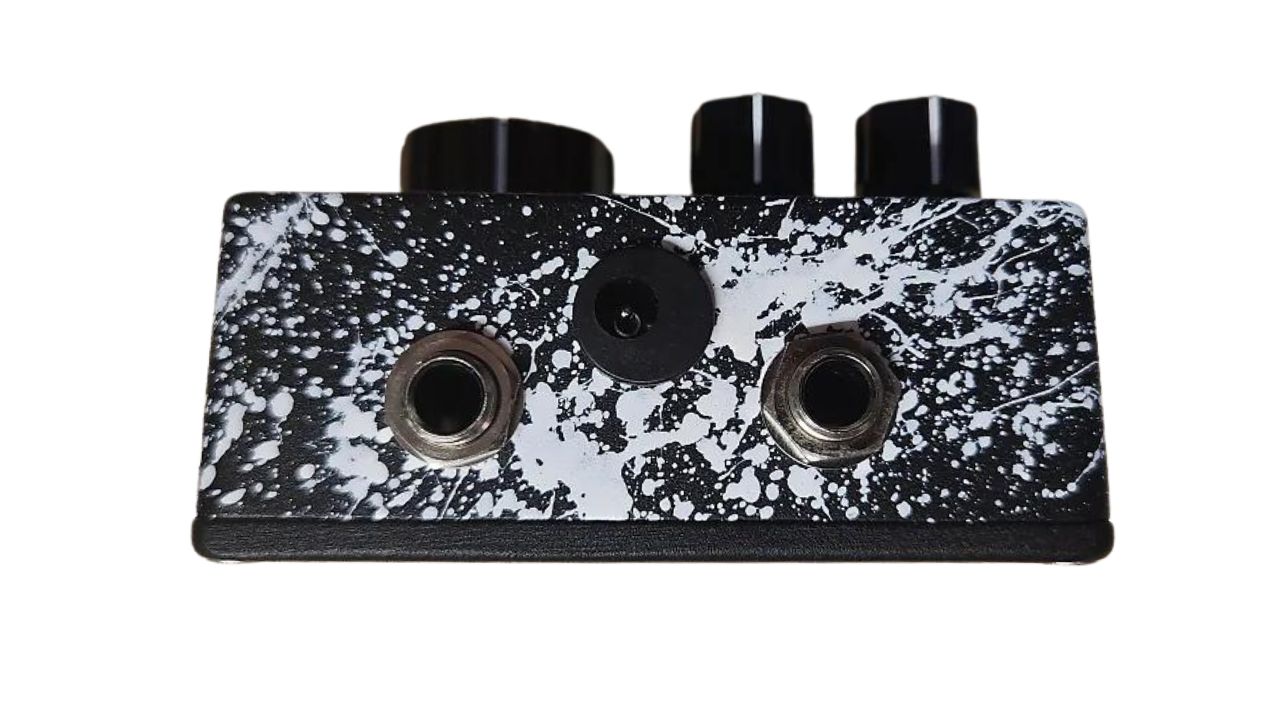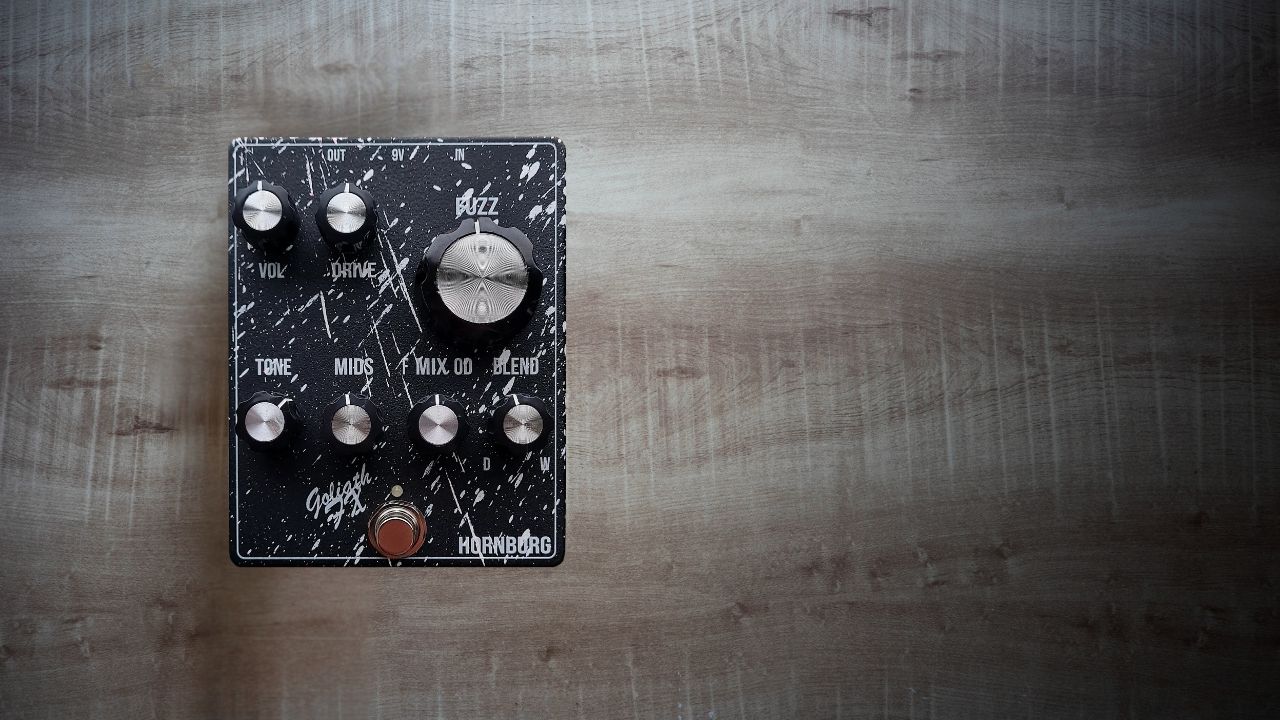Guitar World Verdict
Solidly built, this pedal sounds great too, and can deliver pretty much any level of distortion required, from soft bite to heavy crunch.
Pros
- +
Looks great.
- +
Fear-inducing amounts of fuzz.
- +
Some neat design features.
Cons
- -
Low-end can lose definition in a band mix.
You can trust Guitar World
Bassists seem to have a particular affinity with fuzz, but in the world of beefed-up bass sounds it is rare to come across a new idea. To list all the Big Muff clones alone would be a long and tedious process, but add to this all the circuits based on the Tube Screamer, the Fuzz Face or the Tone Bender and the task becomes almost infinite. We tend, as the old adage goes, to know what we like and like what we know.
Thankfully, some boutique manufacturers are keen to show us what we’re missing and Goliath FX are just such a company.

At first glance, the Hornburg seems to possess the usual controls that we see on most distortion stompboxes, but to understand the quirks of this pedal we need to first look at how the signal is processed.
The input signal is split three ways – overdrive, fuzz and clean blend. Most bassists that use distortion will know that having the ability to add your clean tone is a distinct advantage and leaves the thickness of your sound intact, but being able to blend two other effects into the circuit at the same time is something that really sets the Hornburg apart.
“The concept of stacking circuits is as old as the hills,” says Matt Clark from Goliath FX. “But I can't think of many circuits that actually blend three parallel signals together. Maybe the AlphaOmega by Darkglass Electronics? That’s the closest I can think of. It’s not easy – it took three revisions before we got it right!”
The Hornburg excels at the signature Big Muff snarl. We wasted many hours, but very happily, riffing away on this pedal, and it's a great starting point for anyone looking to really explore the world of distortion effects for bass guitar.
With all the controls set to full we achieved an oppressively heavy (and extremely satisfying!) drive sound, and with careful use of the bassist-friendly mix control, which is nestled between the EQ section and the dry/wet blend, you can't help but notice the very distinct Muse-esque sounds emanating from it. You will easily find yourself drawn to the opening bars of Hysteria.
All the latest guitar news, interviews, lessons, reviews, deals and more, direct to your inbox!
We did try the Hornburg in a band setting, and in drop sections with just bass and drums it sounds great. But add distorted guitar into the mix and you’re in danger of losing some definition. We also tried recording with it, and here it really shines. Thrill-seekers wishing to add balls-to-the-wall, ear-melting fuzz to their bass will be in tonal nirvana.


The Hornburg is a lot of fun and can be used to fill many different roles – so much so that it’s remained on our ’board since the day it arrived. What Matt Clark has created here opens the door into a different perspective on the distortion pedal and one that is fast becoming a bassist favourite. It has its quirks, yes, but overall it's great at what it does – thick bass fuzz in droves.
Specs
- PRICE: $210 / £160
- ORIGIN: UK
- TYPE: Parallel drive pedal
- CONTROLS: Volume, Drive, Fuzz, Tone, Mids, Mix (Fuzz/Overdrive) Blend (Dry/Wet)
- CONNECTIONS: Standard input, standard output
- WEIGHT: 14 oz / 400g
- POWER: 9V DC adaptor
- DIMENSIONS: 90 x 120 x 40mm
- CONTACT: Goliath FX

Nick Wells was the Editor of Bass Guitar magazine from 2009 to 2011, before making strides into the world of Artist Relations with Sheldon Dingwall and Dingwall Guitars. He's also the producer of bass-centric documentaries, Walking the Changes and Beneath the Bassline, as well as Production Manager and Artist Liaison for ScottsBassLessons. In his free time, you'll find him jumping around his bedroom to Kool & The Gang while hammering the life out of his P-Bass.


